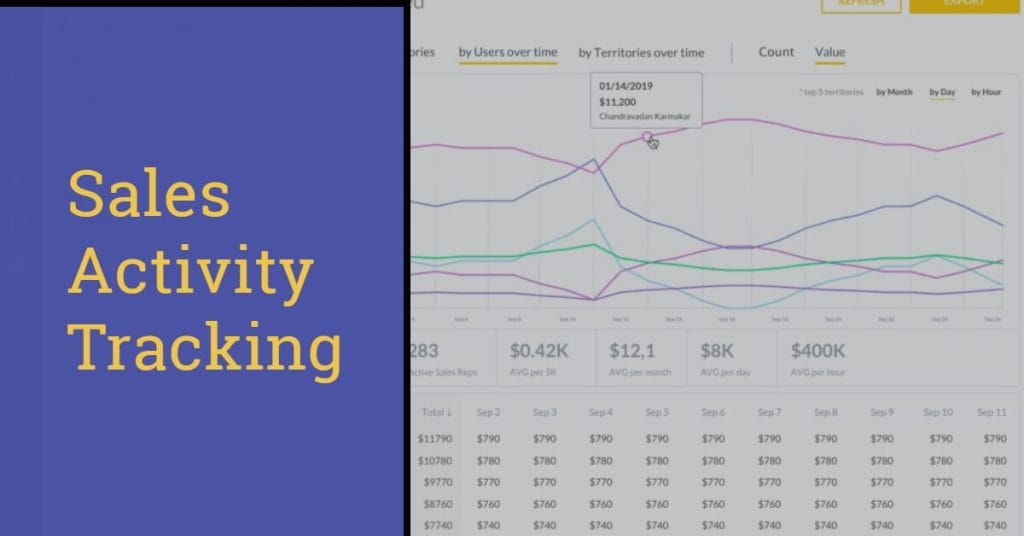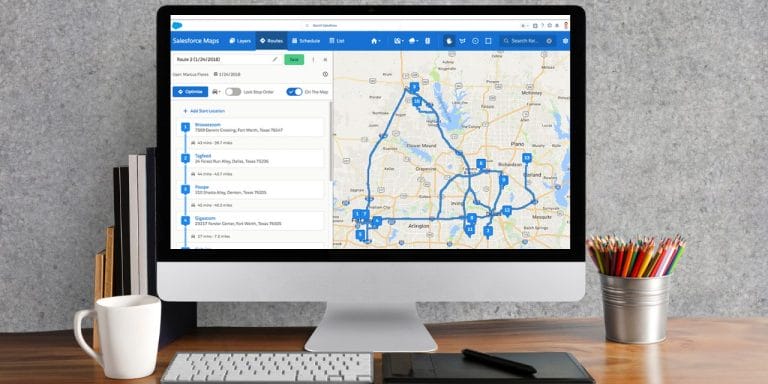Want to help your sales team close more deals? Invest in sales activity tracking.
Doing so will help you identify the way your reps spend their time. You can then use this information to suggest more productive tasks or even adjust your entire sales strategy.
In this article, we’ll explain what sales activity tracking is, why it’s important, the challenges you might face when tracking sales activity for your sales team, tools you can use to make the process easier, and more. We have a lot to get to so let’s get started!
What Is Sales Activity Tracking?
Sales activity tracking is exactly what it sounds like: the process of identifying, recording, and analyzing the specific actions your sales reps take while they close deals.
You know what your reps should do every day—drum up leads, make calls, send emails, visit prospects in person, etc. But are they actually doing these things? Just as important, are the things they do actually working? You need to know the answers to these questions!
Fortunately, sales activity tracking will give you the answers you need. Just make sure you track qualitative and quantitative data. Here’s the difference between the two:
- Qualitative Data: Information about the way your target audience views your company. Data points like customer objections and brand awareness fall into this category.
- Quantitative Data: Information that can be represented numerically. Number of new contacts, lead time, sales by territory, and win rate fall into this category.
When tracking sales activities, pay attention to both qualitative and quantitative data. This will give you a well-rounded view of your target market and your department’s sales strategy.
The Importance of Sales Activity Tracking
Now that we know what sales activity tracking is, let’s talk about why it’s important.
There are many reasons to track sales activities for your reps, but the most important ones revolve around visibility, coaching opportunities to improve processes, better team productivity, and higher revenue wins:
Maximize Sales Rep Productivity
When you know how your reps spend their time, you can help them eliminate unproductive tasks from their daily workflows. (Or add in tasks that will help them achieve better results.)
For example, you might find that your reps input prospect information to your department’s CRM by hand when a tool like SPOTIO will do it for them automatically. Or they only follow up with potential customers three times when they should follow up at least five times.
Optimize the Sales Process
Your team’s sales process will benefit from sales activity tracking, too.
A quick look at the data might tell you that Territory A is way more receptive to your reps’ sales pitches than Territory B. So, what if you asked your reps to contact prospects in Territory A before other prospects? This one simple change will probably lead to more sales.
Boost Pipeline Visibility
Tracking sales activity will also give you deeper insights into your company’s sales pipeline.
It makes sense when you think about it. When you know how your reps spend their on-the-clock hours, you can better predict the number of sales they’ll make, revenue they’ll produce, etc.
Also worth mentioning, sales activity tracking will help you identify each of your reps’ strengths and weaknesses. You can then put them in positions to succeed.
Enhance Sales Rep Coaching
Research shows that sales coaching leads to an 8% bump in annual revenue and a 28% bump in win rate. In other words, it’s essential to the success of your sales team.
Sales activity tracking will make you a more effective sales coach. How so? You’ll be able to see where your reps fall short; then you can help them improve their skill sets.
Achieve Higher Revenue
We’ve alluded to this benefit, but now we’re just going to come out and say it: sales activity tracking will help your sales team achieve higher revenue.
You’ll see what your reps do on a daily basis. You can then use this information to coach your reps more effectively and design better sales strategies. The result? More sales.
Common Challenges of Tracking Sales Activity
Sales activity tracking is obviously beneficial. But getting started can be a challenge.
Fortunately, many of these challenges can be avoided with proper tools. We’ll get to that in a minute. First, let’s talk about a few of the pitfalls you need to watch out for:
- Internal Pushback: When you ask your reps to start tracking sales activity they’re going to complain. Maybe not to you, but definitely to each other. That’s because to them, “sales activity tracking” probably means “spend all day manually updating Salesforce.” We’d complain too. Nobody wants to spend their time doing that.
- Manual Data Entry: Want to know why your sales reps think “sales activity tracking” means “spend all day manually updating Salesforce”? Because for most sales reps, it does. To be clear, sales activity tracking would still be worthwhile if your reps had to manually enter everything into your CRM. Luckily, they won’t have to do that.
- Data Inaccuracies: Manual data entry breeds data inaccuracies. Think about it: your reps return to the office after a long day in the field. They’re tired and want to go home. So they quickly fire up your department’s CRM and enter the “data” from their day as fast as they can. Errors are bound to happen—errors that could affect future deals.
How Sales Tracking Tools Can Help
Did the challenges above make you break out in a cold sweat? Sure, tracking sales activity sounds good in theory, but it might be a bit much in practice. Better skip this one, right?
Don’t worry. The right sales tracking tool will make all of the challenges above disappear.
Take SPOTIO, for example. Our platform will automatically log sales activities for your reps. This will minimize the pushback you receive from them. It will also eliminate the need for manual data entry, which will help your team keep departmental records clean and usable.
Just as important, SPOTIO makes it easy to visualize and analyze the data you collect. That way you can coach reps, adjust sales strategies, and forecast sales more effectively.
Oh, one more thing: SPOTIO includes a leaderboards feature, so that you can gamify the sales activity tracking process. Tap into your reps’ competitive natures and motivate them to achieve more. You can even offer prizes to the top performer of the week, month, or quarter.
Types of Sales Activity Tracking Tools
So, what kind of sales activity tracking tool should you get for your sales team? There are three different kinds you need to know about. Let’s take a look at each of them:
Sales Engagement Tools
Sales engagement tools like SPOTIO will help you track sales activities for your sales team. They’ll help you do a bunch of other things too, like generate leads, cut and map territories, plan routes between leads, communicate with prospects, and analyze important sales metrics. Overall, sales engagement software is a stellar investment for most sales departments.
Add-On Tools
When we say “add-on tools” we’re talking about the apps that connect to your CRM software. Some of them analyze email inboxes. Others help users forecast future sales. The point is, add-on tools can help reduce data entry tasks for reps. Unfortunately, they’re often less configurable than other solutions. Therefore, they might not fit your sales process very well.
Standalone Trackers
Last but not least, we have standalone trackers. These tools are specifically designed to help you track your reps’ sales activities—and many of them do it well. There’s one downside: you have to add another app to your company’s tech stack. More robust tools, like sales engagement software for example, will allow you to do multiple things inside one system. This prevents software overwhelm and is usually a more cost-effective option for sales teams.
Choosing a Sales Activity Tracking Tool
Now, you may think you want a certain sales activity tracking tool. But how do you know it’s the right one for your team? These four tips will help you choose the right app:
Consider Your Reps
What do your reps need?
Do they want a supercharged tool that will help them streamline many of their daily tasks? Or would they rather have a small, contained app that’s built for one specific purpose?
Always consider your reps before buying them software. After all, they’re the ones that will have to use it. If you buy them a tool that doesn’t fit their needs and preferences—even if said tool is the greatest thing since sliced bread—you’re going to have issues. Best avoid that scenario.
Know Your Budget
Keep your budget in mind as well. How much can you afford to pay to track sales activities? The answer to that question will help you narrow down your list of potential purchases.
Remember, something is better than nothing. And you can always upgrade in the future, when you have more money to spend on software. Get the best tool you can afford right now. Then reassess in six months or a year when you have more cash to burn.
Get Proof of Concept
Have you found a sales activity tracking tool that fits your reps’ needs and your current budget constraints? Great, make sure the app can actually do what it claims it can!
Most providers will give you a free trial or product demonstration of some kind. Take advantage of these offers. That way you can how the tool operates in real-world scenarios.
Ensure Integration
Finally, invest in a sales activity tracking tool that will integrate with the rest of your tech stack.
Life is so much easier when your software talks to each other—especially since the average high-performing sales team uses at least four sales tools/systems to close deals.
When your tools integrate, your reps will spend less time on data entry tasks to ensure each of your company’s apps is up to date. Instead, they’ll spend more time selling to prospects. The result? Your team can optimize the investment in its tools and make more sales. Win!
Sales Activity Tracking Made Easy
Want to close more deals and drive more revenue? Start tracking sales activity. Just don’t do it manually. Instead, purchase a tool that will make the tracking process more convenient.
For field sales teams, we recommend SPOTIO. Our platform will automatically log rep activities, produce easy-to-read reports based on activity data, and even generate leaderboards to inspire your sellers. Oh, and SPOTIO integrates with all major CRMs too, like Salesforce and HubSpot.
Sign up for a free demo of SPOTIO today to see its sales activity tracking features in action!




